Wind turbine aerodynamics
We offer aerodynamic services related to the wind energy sector, e.g. siting in complex terrain or icing on blades.
Icing on wind turbine blades and on instruments
For wind turbines and measuring equipment placed in areas with frequent or occasional sub-zero temperatures, the possibility of ice accretion must be considered. Ice accretion on turbine wings will reduce the turbine’s efficiency and may cause undesirable aerodynamic vibrations or even instability. Icing on instruments and measuring equipment may lead to erroneous readings or even permanent failure.
These issues may be addressed in our in-house facility, the Climatic Wind Tunnel (CWT), by testing aerofoils, wing sections, wind turbine components and measuring equipment in a velocity range up to 32m/s in critical climatic conditions, i.e. with ice accretion. The CWT has a test section of 2x2m², and its cooling unit is capable of controlling and keeping a long-term average temperature down to -10°C, depending on the wind speed. A rotatable spray bar system is located in the settling chamber after the honeycomb and allows the simulation of in-cloud icing conditions.
Siting of wind turbine parks in complex terrain
For wind turbine parks in hilly or mountainous terrain, it is necessary to consider the wind conditions across the specific site in order to ensure an efficient location of the wind turbines.
Wind tunnel simulations
In the wide boundary-layer wind tunnel, we test large-scale terrain models with a detailed representation of the site and its surroundings. Our tests provide the developers with an accurate description of the wind conditions for possible locations of the wind turbines.In addition, the tests may provide the wind conditions for planned positions of anemometers at or near the site and compare these with existing meteorological stations in the site’s vicinity.
Based on digital maps of the site, the terrain surface is described using 3D CAD-software. From this software, milling files for our automatic milling machine are generated. This permits a fast and precise model production. The terrain model investigations are normally conducted for areas covering several kilometres. Typical model scales are 1:1000 to 1:2000.
The experimental approach to evaluate the wind conditions at wind turbine sites is accurate and also cost- and time effective.
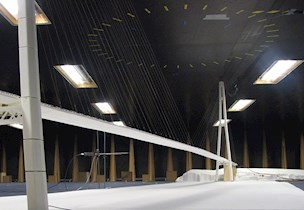
Facility
Wind tunnels
Related services
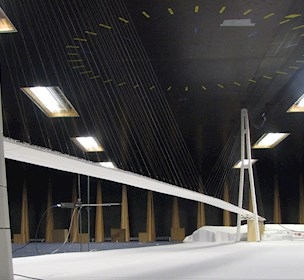
Aerodynamic assessment of bridges
/Service
Test of components, sections and scale models of bridges.
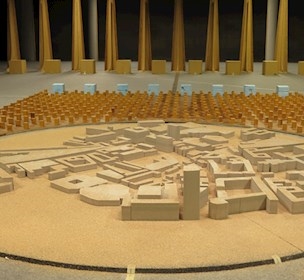
Aviation aerodynamics
/Service
Aerodynamic services related to the operation of aircrafts and planning of related facilities.
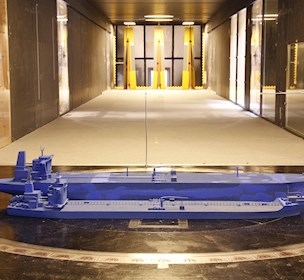
Aerodynamic assessment of vessels
/Service
Wind tunnel test can ensure that the vessel meets the operational and class requirements.
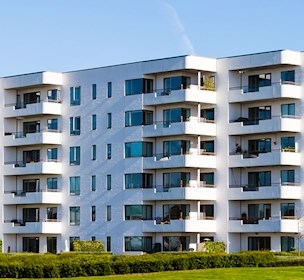
Wind loads on buildings and structures
/Service
A good wind environment around a structure or area is central to usability and financial success.

Aerodynamic tests for offshore structures
/Service
We perform wind tunnel studies for the offshore industry on numerous types of offshore structures.

